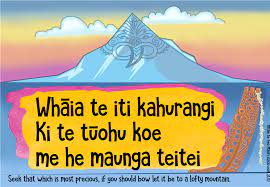Term 1 Week 3
Section outline
-
KO AU ME TŌKU WHANAU
For the majority of term one, we will be learning language features to help us communicate about ourselves and our family.
Achievement Objectives:
1.1 communicate about personal information such as name, parents’ and grandparents’ names, iwi, hapū, mountains, and river, or home town and place of origin
2.1 communicate about relationships between people
Success Criteria
Students will be able to:
- draw a whakapapa chart accurately
- extract information from a whakapapa chart
- introduce self and family members
- describe relationship with members of immediate family
- use possessives and pronouns accurately
- ask and reply age
Whakatauki

Seek for that which is most precious, If you have to bow, let it be to a lofty mountain.
Tikanga
In te ao māori, the concept of whānau extends beyond parents and children to include grandparents, grandchildren, uncles, aunts, cousins, nieces, nephews, and others.
- Whakapapa is important. It defines a person and his or her links within the whānau to their ancestors and to other groups. It governs the relationships between them.
- Whakapapa is a much broader concept than the concept of a family tree. Through whakapapa, each person may belong to different groups: whānau, hapū, iwi, and waka.
Activities
This week you will learn to give a simple mihi to introduce yourself, a new karakia and a waiata.
EXPLORE / TŪHURA learning intentions:
- We are EXPLORING familiar words about ourselves and our whānau
